Contribute
| India Golden Period (200 BCE – 500 CE) – Philosophy And Religion |
Satyendra Sharma
06/24/2021
There was a serious debate on the Vedic authority during this period. Classical Philosophy developed, particularly, SÄnkhya, championing the concept of freedom of action. Other analytic models followed. Philosophy As per SÄnkhya, praká¹›ti with its three gunas “qualities†- satva, rajas and tamas, is responsible for the actions of an individual. Multiple views result depending on the preceptor under the influence of the three gunas. Vaisheshika puts burden of good and bad experiences, that are otherwise not explainable by substances, qualities and actions, on adṛṣá¹a “unseenâ€. LokÄyatas would not agree to the existence of any higher power to explain life events. Since direct perception is complete in itself to determine the existence of such an entity. Jainas hold individuals responsible for their actions and prescribe progressively severe atonement measures for bad actions. This led to inaction for the fear of committing sinful actions impacting daily life. A technical term Karma was created as a repository of life’s activities for the migration of the jÄ«va “soul†as manifestation in the universe. YogasÅ«tra of Patanjali established the science of mind control by following aá¹£á¹Äá¹…ga yoga “eight-fold path†methodology. It helps a practitioner to transcend from individual identity to a full cosmic realization. The Yogic practice enables an individual to go beyond the physical body consciousness by getting rid of memory collection that binds the mind to the body. Buddhism enunciated a golden mean between the Vedic ritualism to achieve dharma, artha, kÄma and mokhsa and extreme self-renunciation in Jainism. Buddhism allowed room for error in achieving goal through samyak “appropriate†action. The theory of pratityasamutpÄda “dependent origination†was created as a derivative Buddha’s teachings. There is a process of perpetual changes that have direct or indirect causes. A realized person will perceive this dependent origination. Buddhist saá¹gha “like-minded†model gave rise to social and professional guilds that operated as economic units in the society. The society was known for religious harmony and opulence. Religion River-based massive religious festivals were popular. Congregations occasionally lasted for several weeks. There was a strong astronomical input to the observance of the festivals. Social intercourse included recitations, discourses, musical presentations and dramatic presentations. Religious observance did enter into the daily living and the practice of the profession. Scriptures like dharmashÄstra and manusmá¹›ti were followed to create protocols of daily living. Mendicants and monastics helped to educate people on the religious principle and propagating religious idea. Religious texts were scribed and copied as large-scale monastic endeavors. There was a proliferation of Buddhist and Jaina manuscripts. Scriptures of modern Hinduism were formally documented during the period. Different religions co-existed largely peacefully. Buddhism was the state religion for most part. Masses got attracted to Buddhism. Austere Jainism did propagate to south. Various grassroot practices and belief systems among the people were integrated to form the foundation of modern Hinduism. Sectarian integration led to the social institution of “caste†which became a family-oriented privilege. References 1. The Nyaya Sutras of Gotama –The Sacred Books of Hindus – B.D. Basu, Vijaya Press, 1913 --------------------------------------------------------------------------------------- Dr. Satyendra Sharma leads the Philosophy and Religion track in India Discovery Center's project on "Evolution of Indian Culture: Pre-history to 1947AD". More information and updates on the project are available at https://www.facebook.com/Evolution-of-Indian-Culture-An-IDC-Project-107749391111922 Information on India Discovery Center is at https://www.indiadiscoverycenter.org (c) Copyright 2021 India Discovery Center, Inc. All rights reserved.India Golden Period (200 BCE – 500 CE) – Philosophy and Religion
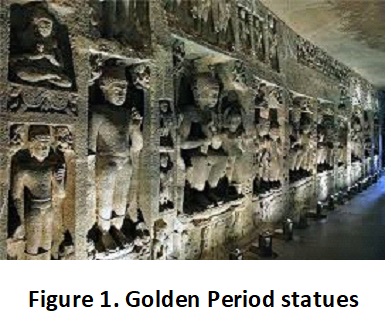
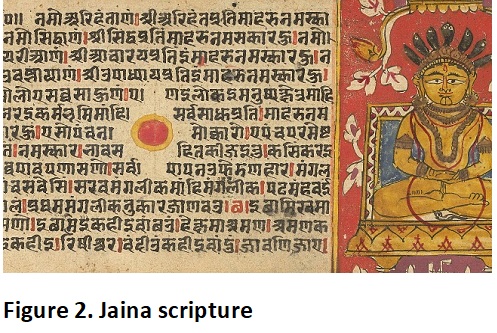
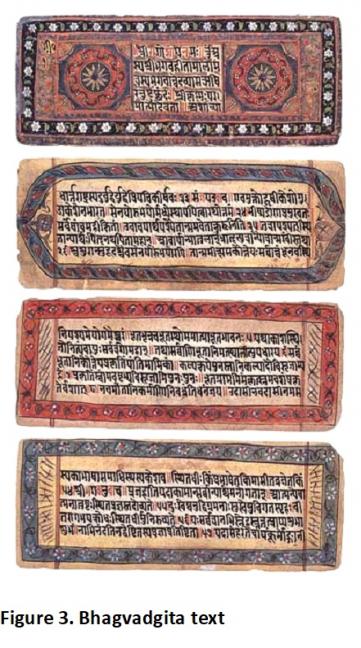
Krishna in BhagavadgitÄ extended SÄnkhya philosophy by proposing concept of desireless action without caring for the fruits of the actions. According to him, a true sanyÄsin “renunsciate†is the one who rejects goal-oriented actions. Any action regardless of its fruit should not be attached to the gratification of senses by observing karma-saá¹nyÄsa. A tyÄgÄ«, on the other hand, is one who renounces the fruits of actions altogether. As per Krishna, unattached performance of actions leads to moká¹£a “liberationâ€.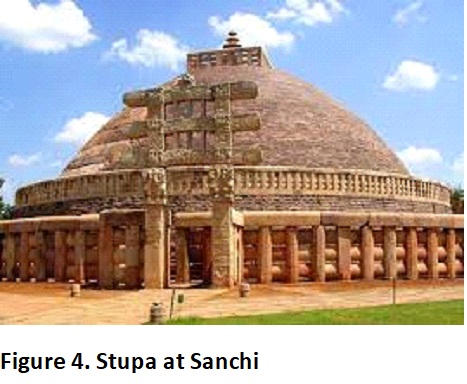
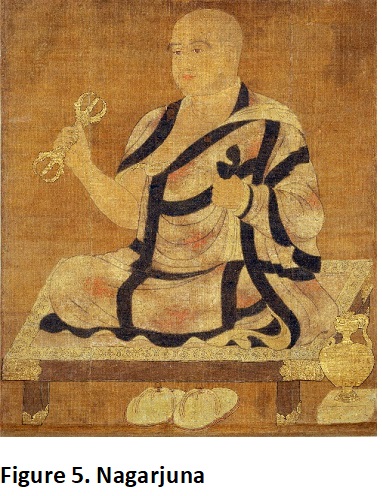
Mid to late Golden period witnessed developments in Buddhist thought with the advent of mÄdhyamikÄ â€œmiddle wayâ€school of thought propounded by Nagarjuna. This school takes middle path between the two extremes – eternal existence of the essence that makes up all existence and that the essence gets extinguished post-existence. As per Nagarjuna, all existence is śūnya “void†of any inherent nature. When a candle wick gets extinguished, the light is non-existent. The state of NirvÄna “liberationâ€can be achieved by extricating oneself from the realm of existence, and realizing śūnya.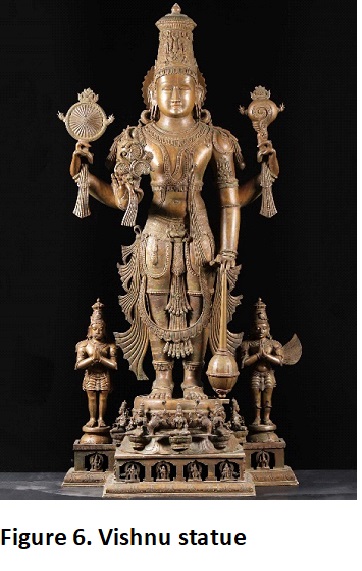
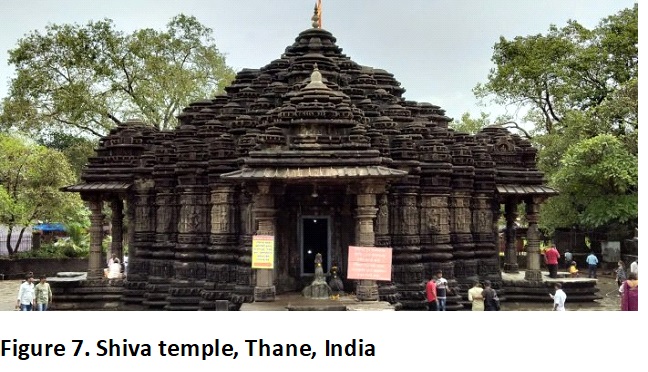
Temple worship as is practiced in modern India had its origin during the period. Viṣṇu and Åšiva were the preferred deities in the north and south. Old naturally formed pillar like formations were worshipped as a fertility symbol liá¹…ga “phallusâ€. Caves were carved to create the abode of religious symbols. Buddhist and Jaina temples were scattered I the country. 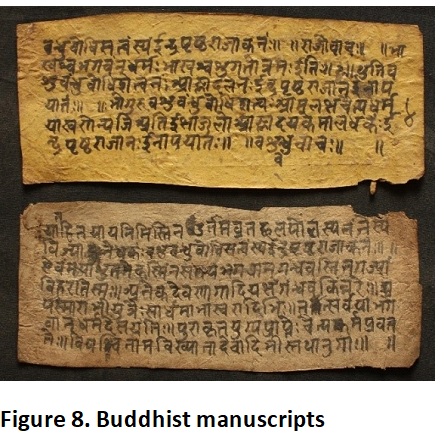
2. The Vaisheshika Sutras of Kanada - The Sacred Books of Hindus – B.D. Basu, Vijaya Press, 1923
3. The Sankhya Aphorisms of Kapila – James Ballantyne, Trubner & Co, London, 1885
4. Yoga Sutras of Patanjali with exposition of Vyasa -Pandit Ursharbudh Arya, Pennsylvania ,1986
5. Jainism and Buddhism – Internet Archives (Archive.org)
6. Tattvarthasutra – Vijay K Jain, Vikalpa Printers, Dehardun, 2011,
7. Stanford Encyclopedia of Philosophy - https://plato.stanford.edu/
8. IDC Presentation, May 2018 https://www.indiadiscoverycenter.org/philreligionmain/philreligiongolden/
You may also access this article through our web-site http://www.lokvani.com/








